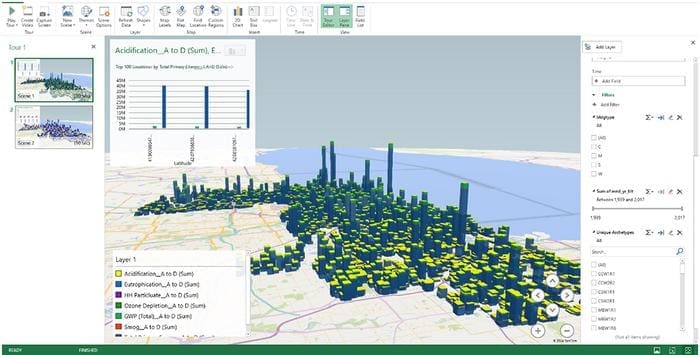Researchers at the University of Notre Dame have developed a tool to analyze embodied carbon in over one million buildings in Chicago. Embodied carbon refers to the greenhouse gas emissions associated with the entire life cycle of building materials, including their extraction, production, transportation, construction, and eventual demolition.

While operational emissions have traditionally been the focus in reducing carbon footprints, Ming Hu, the associate dean for research, scholarship and creative work in Notre Dame’s School of Architecture, emphasizes the importance of considering embodied carbon in existing buildings.
“We feel this is a more clear, direct way to help policymakers or laypeople make informed decisions,” Hu said.
This tool aims to guide urban planners and policymakers by visualizing the embodied carbon embedded in city structures, allowing them to assess whether retrofitting or demolishing buildings is the best environmental option. The research reveals that extending a building’s lifespan from 50 to 75 years, while reducing its size by 20%, can lower emissions by two-thirds.
Hu, along with civil and environmental engineering graduate student Siavash Ghorbany, identified 157 distinct architectural housing types in Chicago, creating a visual analysis tool that provides insights into geographic areas with high emissions.
Their analysis shows that reusing buildings always results in lower carbon emissions compared to constructing new ones, even if the new buildings are more energy-efficient. “The ‘payback period’ for constructing a new building is typically 20 years due to the high level of greenhouse gas emissions created by its construction,” Hu noted. “So, if we can extend a building’s life cycle to 70 or 80 years, then reusing the existing building definitely makes more sense.”
The research, which was funded by the National Science Foundation, leverages machine learning and artificial intelligence to integrate multiple datasets, including the National Structure Inventory and Cook County Open Data, to map out the city’s embodied carbon landscape.
Ghorbany emphasized the tool’s accessibility, saying, “We created this one so that you can try different scenarios by selecting which types of archetypes you want to see and filtering them by year or types of emissions. I hope that in the future, cities will be able to use this tool to reduce their carbon emissions so that we can help reduce climate change and the impacts we’re seeing from it.”
Looking ahead, the researchers plan to scale their project to evaluate embodied carbon across cities in the U.S., offering a crucial tool for urban planners aiming to mitigate climate change. Along with environmental benefits, Hu stressed the cultural importance of the research, noting that preserving older buildings also maintains the architectural character of cities.
Journal Reference:
Ghorbany, S. and Hu, M. ‘Urban embodied carbon assessment: methodology and insights from analyzing over a million buildings in Chicago’, Carbon Management 15(1) (2024). DOI: 10.1080/17583004.2024.2382993
Article Source:
Press Release/Material by University of Notre Dame
Featured image credit: TravelScape | Freepik




